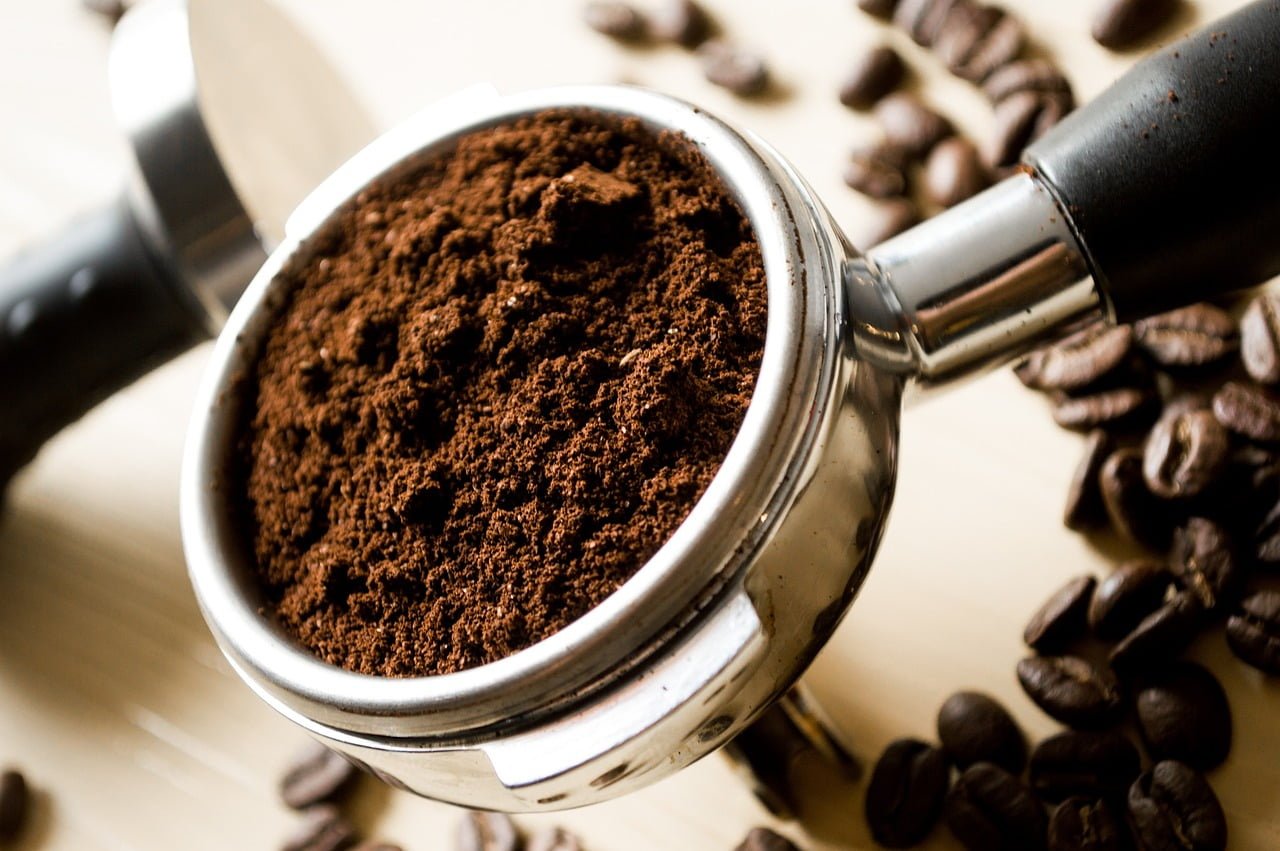Can we eat coffee grounds?
Can we eat coffee grounds? Coffee grounds are a common byproduct of brewing coffee, typically consisting of the leftover coffee bean remnants after the liquid coffee has been extracted. While they are primarily viewed as waste, coffee grounds have gained attention for their potential uses in various culinary, environmental, and even health-related contexts.
In this discussion, we will explore the possibilities and considerations associated with consuming coffee grounds, shedding light on their nutritional value, safety aspects, culinary applications, and the broader impact on both individuals and the environment. Whether you’re curious about incorporating coffee grounds into your diet or simply interested in learning more about this often-overlooked substance, this exploration of coffee grounds will provide valuable insights.
Nutritional Content of Coffee Grounds
Coffee grounds contain a range of compounds and nutrients that may surprise you. While they are not typically consumed as a primary source of nutrition, they do offer some nutritional benefits. Here’s a closer look at the nutritional content of coffee grounds:
- Dietary Fiber: Coffee grounds are a good source of dietary fiber. Fiber is essential for digestive health and can help regulate bowel movements.
- Antioxidants: Coffee grounds are rich in antioxidants, such as chlorogenic acid, which have been linked to various health benefits, including reduced risk of chronic diseases and protection against free radicals.
- Vitamins: Coffee grounds contain small amounts of certain vitamins, particularly B vitamins like niacin (vitamin B3) and riboflavin (vitamin B2).
- Minerals: They also contain trace amounts of essential minerals like potassium, magnesium, and phosphorus.
- Caffeine: While most of the caffeine is extracted during the brewing process, some remains in the grounds. This can vary depending on the type of coffee and brewing method, but it’s generally a smaller amount compared to a cup of brewed coffee.
It’s important to note that the nutritional content of coffee grounds is relatively low compared to other foods. Therefore, they are not a significant source of vitamins and minerals in the diet. However, their potential health benefits, especially through antioxidant compounds, have led to some interest in incorporating them into various recipes and dishes.
Safety Considerations
While coffee grounds can be consumed in moderation and have some potential health benefits, there are important safety considerations to keep in mind:
- Caffeine Content: Coffee grounds contain caffeine, although in lower amounts compared to a cup of brewed coffee. If you’re sensitive to caffeine or trying to limit your intake, be cautious when consuming foods or beverages made with coffee grounds, as the caffeine can add up.
- Texture and Grit: Coffee grounds have a gritty texture, which can be unpleasant to eat in large quantities. When using coffee grounds in recipes, it’s essential to incorporate them in a way that doesn’t disrupt the overall texture of the dish.
- Bitterness: Coffee grounds can be bitter, which can affect the taste of foods or drinks they are added to. Balancing the bitterness with other ingredients, such as sugar or sweeteners, is often necessary.
- Acidity: Coffee grounds are acidic, and excessive consumption may contribute to stomach discomfort or acid reflux in some individuals. People with sensitive stomachs should be cautious.
- Digestive Effects: Coffee grounds are a source of dietary fiber, which can have a laxative effect when consumed in excess. This may lead to digestive discomfort or diarrhea if consumed in large quantities.
- Mold and Bacteria: Coffee grounds can develop mold and bacteria if stored improperly or left exposed to moisture. Always store coffee grounds in a cool, dry place and use them within a reasonable time frame to prevent spoilage.
- Allergies and Sensitivities: Some individuals may be allergic to components in coffee grounds or have sensitivities to certain compounds. If you have known allergies or sensitivities, exercise caution when trying foods or beverages made with coffee grounds.
- Pesticide Residues: Coffee beans may be treated with pesticides during cultivation. While most of these residues are removed during the brewing process, some may remain in the grounds. Using organic coffee or choosing reputable brands can help minimize pesticide exposure.
In summary, consuming coffee grounds in moderation is generally safe for most people. However, it’s essential to be mindful of the potential caffeine content, texture, and bitterness when incorporating them into your diet. If you have specific health concerns or dietary restrictions, it’s advisable to consult with a healthcare professional before making coffee grounds a regular part of your culinary repertoire.
Culinary Uses of Coffee Grounds
Coffee grounds, often viewed as a waste product, can be creatively incorporated into various culinary dishes and recipes. Here are some innovative culinary uses for coffee grounds:
- Coffee Rubs for Meat: Coffee grounds, when mixed with spices and herbs, make an excellent dry rub for meats, such as beef, pork, or poultry. The coffee’s earthy and slightly bitter flavor complements the richness of the meat, creating a unique and flavorful crust when grilled or roasted.
- Coffee Marinades: Coffee grounds can be used to create marinades for meats and tofu. Combine coffee grounds with ingredients like olive oil, garlic, herbs, and a touch of sweetness for a complex and aromatic flavor profile.
- Baking: Incorporate coffee grounds into baked goods like brownies, cakes, or cookies. The grounds can add depth and a subtle coffee flavor to your sweet treats. Be sure to finely grind the coffee to avoid a gritty texture.
- Coffee-Infused Sauces: Use brewed coffee or coffee grounds to enhance savory sauces, such as barbecue sauce, chili, or gravy. The coffee’s bitterness can complement the richness of these dishes.
- Coffee-Flavored Ice Cream: Infuse coffee grounds into a cream base when making homemade ice cream. The result is a creamy and aromatic coffee-flavored treat.
- Coffee-Flavored Beverages: Blend coffee grounds into smoothies or shakes for a caffeine boost and a hint of coffee flavor. Remember to strain or use finely ground coffee to avoid grittiness.

Recipes Incorporating Coffee Grounds
Certainly! Here are a few recipes that incorporate coffee grounds:
- Coffee-Rubbed Steak:
- Ingredients:
- 2 tablespoons coffee grounds
- 1 tablespoon brown sugar
- 1 teaspoon smoked paprika
- 1 teaspoon salt
- 1/2 teaspoon black pepper
- 1/2 teaspoon garlic powder
- 2 steaks (e.g., ribeye or sirloin)
- Instructions:
- In a bowl, combine coffee grounds, brown sugar, smoked paprika, salt, black pepper, and garlic powder.
- Rub the mixture evenly over both sides of the steaks.
- Let the steaks sit at room temperature for about 30 minutes.
- Grill or pan-sear the steaks to your desired doneness.
- Ingredients:
- Coffee-Infused Chocolate Brownies:
- Ingredients:
- 1 cup all-purpose flour
- 1/2 cup cocoa powder
- 1/2 cup sugar
- 1/2 cup butter, melted
- 2 eggs
- 1/4 cup brewed coffee (cooled)
- 2 tablespoons coffee grounds
- Instructions:
- Preheat your oven to 350°F (175°C) and grease a baking pan.
- In a bowl, combine flour, cocoa powder, sugar, and coffee grounds.
- In another bowl, whisk together melted butter, eggs, and brewed coffee.
- Gradually add the wet mixture to the dry ingredients, stirring until well combined.
- Pour the batter into the prepared baking pan and bake for 20-25 minutes or until a toothpick inserted comes out mostly clean.
- Ingredients:
- Coffee BBQ Sauce:
- Ingredients:
- 1 cup brewed coffee (strong)
- 1/2 cup ketchup
- 1/4 cup brown sugar
- 2 tablespoons apple cider vinegar
- 1 tablespoon Worcestershire sauce
- 1 teaspoon coffee grounds
- 1/2 teaspoon smoked paprika
- Salt and pepper to taste
- Instructions:
- In a saucepan, combine brewed coffee, ketchup, brown sugar, apple cider vinegar, Worcestershire sauce, coffee grounds, and smoked paprika.
- Bring the mixture to a simmer over medium heat, stirring frequently.
- Reduce heat and let it simmer for about 15-20 minutes or until the sauce thickens.
- Season with salt and pepper to taste.
- Use the coffee BBQ sauce as a marinade or glaze for grilled meats or vegetables.
- Ingredients:
These recipes demonstrate how coffee grounds can add depth and flavor to various dishes. Adjust the quantities of coffee grounds to suit your taste preferences, whether you prefer a subtle hint of coffee or a more pronounced flavor. Enjoy experimenting with these coffee-infused recipes!
Health Benefits and Risks
Coffee grounds offer both potential health benefits and risks, depending on how they are consumed and the individual’s tolerance. Here’s a balanced overview:
Health Benefits:
- Antioxidants: Coffee grounds contain antioxidants, including chlorogenic acid, which may help protect cells from oxidative stress and reduce the risk of chronic diseases like heart disease and certain cancers.
- Dietary Fiber: Coffee grounds provide dietary fiber, which is essential for digestive health, helps regulate bowel movements, and supports a feeling of fullness, aiding in weight management.
- Improved Mood and Alertness: The caffeine in coffee grounds can enhance mood and increase alertness when consumed in moderation. It may also improve cognitive function and concentration.
Health Risks:
- Caffeine Content: Coffee grounds contain caffeine, and excessive consumption can lead to side effects such as anxiety, insomnia, increased heart rate, and digestive discomfort. Individuals who are sensitive to caffeine should be cautious.
- Gritty Texture: Coffee grounds have a gritty texture, which can be unpleasant to eat in large quantities and may contribute to digestive discomfort if not finely ground.
- Bitterness: The bitterness of coffee grounds may be undesirable to some individuals and could affect the taste of dishes or beverages.
- Acidity: Coffee grounds are acidic and can contribute to acid reflux or stomach discomfort in people with sensitive stomachs.
- Laxative Effect: The dietary fiber in coffee grounds can have a mild laxative effect when consumed in excess, potentially leading to digestive issues like diarrhea.
- Allergies and Sensitivities: Some individuals may be allergic to coffee or have sensitivities to specific compounds found in coffee grounds, leading to adverse reactions.
- Pesticide Residues: Coffee beans used to make coffee grounds may contain pesticide residues. Opting for organic coffee can help mitigate this risk.
- Mold and Bacteria: Coffee grounds can develop mold and bacteria if not stored properly. Ensure proper storage to prevent spoilage.
In summary, consuming coffee grounds in moderation can offer some health benefits due to their antioxidant content, dietary fiber, and caffeine content. However, individuals should be aware of the potential risks, including the presence of caffeine, grittiness, bitterness, and digestive effects. It’s essential to tailor the consumption of coffee grounds to your individual tolerance and preferences and consult with a healthcare professional if you have specific health concerns or sensitivities. Additionally, always ensure that coffee grounds are properly stored to avoid spoilage.
Environmental Impact of Coffee Grounds
Coffee grounds have both positive and negative environmental impacts, depending on how they are managed. Here’s an overview of their environmental implications:
Positive Environmental Impact:
- Compost Material: Coffee grounds are an excellent source of organic matter for composting. When added to compost bins or piles, they contribute valuable nutrients to the soil, improve its texture, and enhance microbial activity.
- Reduced Food Waste: Using coffee grounds in creative ways reduces food waste, which is an environmental issue. By finding alternative uses for coffee grounds, less organic material ends up in landfills, where it can produce harmful greenhouse gases like methane.
- Fertilizer: Coffee grounds can be used as a natural fertilizer for certain plants, such as acid-loving plants like azaleas, rhododendrons, and blueberries. They provide a source of nitrogen and other essential minerals.
- Pest Repellent: Coffee grounds may deter pests like slugs and snails in gardens. The rough texture and caffeine content can be unpleasant for these creatures.
Negative Environmental Impact:
- Resource Intensive Production: The production of coffee itself can have significant environmental impacts. It often involves deforestation, water use, and pesticide use, which can harm ecosystems and biodiversity.
- Waste in Landfills: If coffee grounds are not properly disposed of or repurposed, they can contribute to landfill waste. In landfills, they may generate methane gas, a potent greenhouse gas.
- Energy for Brewing: The energy required to brew coffee, especially in commercial settings, contributes to the carbon footprint associated with coffee consumption.
Mitigating Environmental Impact:
To minimize the negative environmental impact of coffee grounds and maximize their positive contributions:
- Compost: Whenever possible, compost coffee grounds along with other organic kitchen waste. This reduces landfill waste and enriches soil.
- Reuse: Get creative with coffee grounds by using them in recipes, beauty products, or cleaning solutions before discarding them.
- Recycle: Some municipalities have programs for recycling coffee grounds. Check with your local waste management for guidance.
- Choose Sustainable Coffee: Support coffee brands and growers that use sustainable and environmentally friendly practices. Look for certifications like Fair Trade and Rainforest Alliance.
- Reduce Energy Consumption: Consider energy-efficient brewing methods like French presses or pour-over techniques to minimize energy consumption associated with coffee preparation.
In conclusion, coffee grounds can have both positive and negative environmental impacts. When managed responsibly by composting, reusing, or recycling, they contribute to reducing food waste and supporting sustainable practices. However, the broader environmental impact of coffee is influenced by factors beyond just the grounds, including coffee production methods and consumer choices.
Conclusion: Can You Eat Coffee Grounds?
In conclusion, yes, you can eat coffee grounds, but with certain caveats and considerations. Coffee grounds offer potential benefits, such as antioxidants, dietary fiber, and unique flavors, making them a versatile ingredient for culinary experimentation. However, it’s essential to keep the following points in mind:
- Moderation: Consume coffee grounds in moderation to avoid excessive caffeine intake and potential side effects.
- Texture and Flavor: Coffee grounds have a gritty texture and bitterness, which may not be to everyone’s taste. Experiment with different recipes and techniques to incorporate them effectively.
- Safety: Be mindful of the potential for mold, bacteria, or pesticide residues in coffee grounds. Store them properly, use fresh grounds, and opt for organic coffee when possible.
- Individual Tolerance: Consider your individual tolerance to caffeine, allergies, and sensitivities when incorporating coffee grounds into your diet.
- Environmental Impact: Responsible disposal and repurposing of coffee grounds can help reduce food waste and contribute positively to the environment.
In summary, while coffee grounds should be approached with caution, they can add depth and flavor to various culinary creations when used thoughtfully. Their nutritional content, when balanced with their potential drawbacks, makes them an interesting and eco-friendly ingredient for those looking to explore new tastes and textures in their cooking.
Related Posts
This article is reviewed by Russel, before publishing. If you have any doubt, you can contact us or consult with your nearby doctor. Remember, in medical matters, there is no same advice, cure, and medicine for all.







